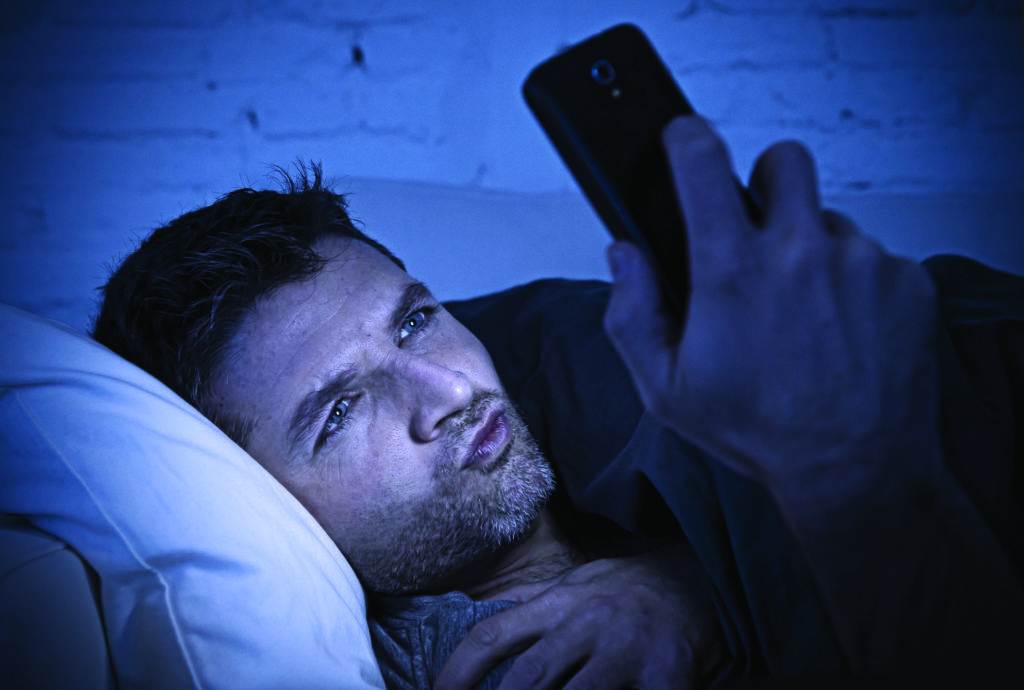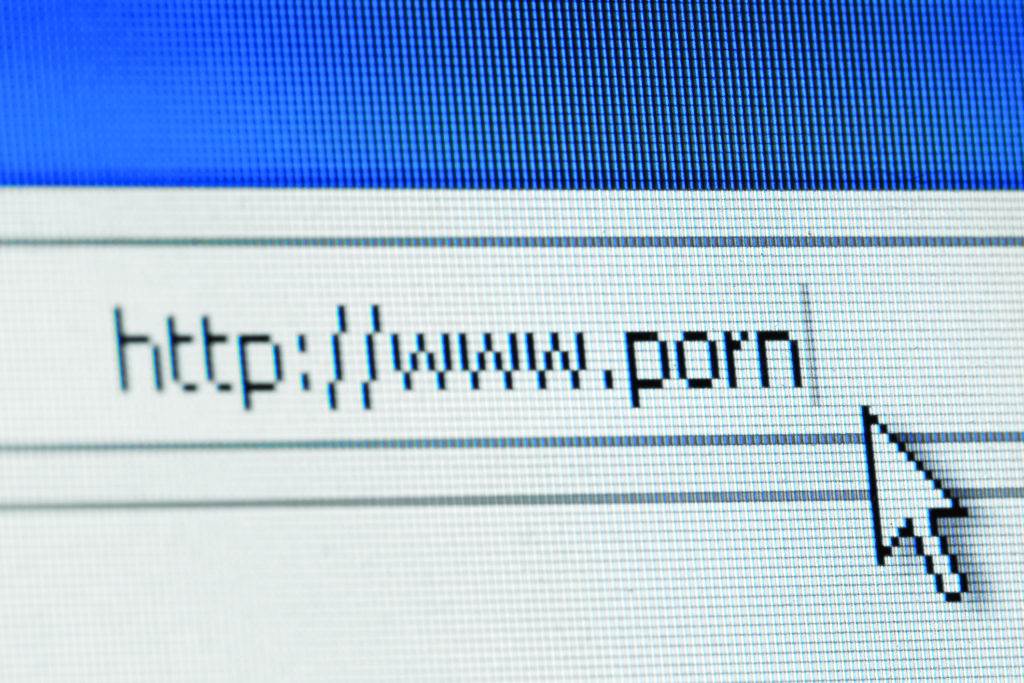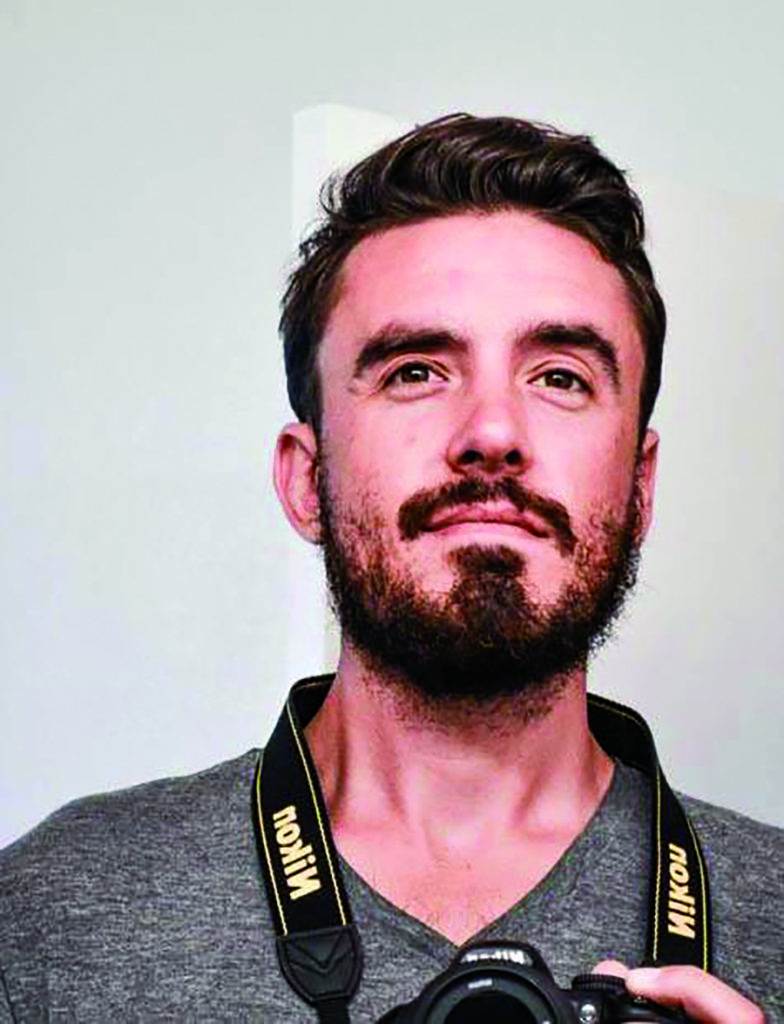A Millennial’s Personal
Journey through Addiction
BY CARSON LINFORTH BOWLEY
Hi, I’m Carson, and I’m addicted to porn.
I never imagined I’d find myself sharing these words to a roomful of teary-eyed addicts in a 12-step meeting. How did it happen to me? How did I sabotage 20 years of life and love to something I once thought was so harmless?
We live in a dangerous time for young minds. The very tools built to connect us are slowly isolating us, even from ourselves. Smartphones are supremely efficient devices for satisfying desire. Curious? Google it. Lonely? Log in to Facebook. Horny? Swipe right on Tinder. And they’re popular. Only eight years after Steve Jobs announced the first iPhone, today over two billion people own smartphones.
Famous experiments conducted in the ’50s demonstrated how rats, when given the opportunity to self-stimulate the pleasure center of their limbic brains, would hit the lever as much as 700 times per hour in preference over food and water. In short, the dopamineaddicted rats would exhaust themselves, rubbing their noses raw at the self-stimulation lever until they eventually died of starvation. Today we’re the rats, except our lever is the sleek sliver of glass inside our pocket s.
Like most drugs, dopamine is big business. The scary part is when the smartphone’s promise of frictionless hedonism compounds our most potent biological reward—orgasm. Our biological imperative is simple—get laid and don’t die. Orgasms assure us that we’re doing our job. “Whatever just happened was good, and you should keep doing it.” But porn today is everywhere, like fast food for our brains. Fast, cheap, and easy.

Let me tell you from my experience: when you’re addicted to porn, you’re nowhere. I’m 30 now, but I compromised almost 20 years to an endless wheel of self-shaming and selfmedicating. I had good bones, wise parents, and a strong mind, but none of it mattered as I found myself defenseless against a $100 billion porn industry.
Like many fellow millennials, I lost my virginity to a computer. The Internet and I grew up together. I found my sense of self and sexuality at 56 Kbps. I would stay up night after night, searching, scavenging, feverishly waiting for the next image to load. It was a kind of glitchy, line-by-line digital striptease. Once I realized my Pentium was actually a dopamine lever, I savored private moments alone with the machine, oblivious to the destructive pathways I was laying in my young brain. I learned to regard the screen as a reliable and pliable lover with infinite stamina and zero inhibitions.
Then in my early teens, it would be years before live human women were sexually available, and once they were I found myself out of sync with them. My body didn’t react the way I’d seen on screen. Instead of experiencing agonizing pleasure, I found my body numb and generally disinterested in actual live sex. Orgasms were rare, achieved only by vacating my body into some imaginary porn scene. My disembodied sexual apathy led to a decade of unfulfilling encounters with women whose only rational explanation for it was their own undesirability. The truth is their desirability was irrelevant because my sexual circuits were misaligned.
As our vices weave their tentacles deeper into our lives, they compound in complexity. For example, the more disappointing experiences connecting with a real woman I had, the more I sought porn to soothe my wounds. Porn presented the escape from the seemingly inevitable disappointment of human connection, implanting a miserable feedback loop: porn leads to shame, shame leads to porn.
This is how I spiraled deeper into the black hole of shame. My inner world began to decay. Though I was repulsed by my own self and the time I’d wasted, the opportunities missed, the numbness to love, I continued to withdraw from the world. The predatory ethics of the porn machine are such that I was under its thumb whether I knew it or not. The deeper I got, the faster I fell. It doesn’t take long to drown.
But men don’t drown alone. Women suffer alongside us, confused and bewildered by our gradual withdrawal from intimate connection. It’s common for women to feel rejected, ashamed, and betrayed by their partners’ porn habits. Marriages suffer. Data collected in 2002 by the American Academy of Matrimonial Lawyers showed that the excessive use of porn was a factor in 56% of divorce filings. That was 14 years ago, before smartphones or even broadband had reached full adoption. Women everywhere feel pressured to conform to degrading visual expectations imposed by the porn monoculture made by men, for men.
I still remember the night my first cracks began to let the light in. It was Halloween, and I was visiting a friend at the Esalen Institute. I couldn’t deny that porn had already had a profoundly destructive effect in my life, but identity is a delicate thing. The notion of being an addict was a treacherous addition to my identity. So for the first time, I asked for help. A hand-drawn sign in the Esalen dining hall advertised an AA meeting that very night. Unsure of what to expect, I dropped in. When the words came out of my mouth, “My name is Carson, and I’m addicted to porn,” a swell of 20 years of swallowed pain burst from my heart and into that room. My suffering was reflected in the warm, wet eyes of a dozen recovering addicts.

When I returned to civilization, I found it was harder to find help than I expected. The 12-step programs felt like a natural place to start, but the Sex Addicts Anonymous meetings held in the heart of San Francisco catered to a very different breed of addict than horny millennials. The experience spooked me, so I sought one-on-one talk therapy. My 18 months on the couch helped me reduce my sense of shame, but did little to shift my underlying habits. In the war of deas versus habits, ideas tend to lose.
My first glimmer of honest hope came from Reddit of all places, one of the Internet’s largest communities, with half a billion monthly visitors. A group of redditors began realizing that porn was ruining their lives and that they felt impotent to stop it. They banded together to take a stand, forming a grassroots community called NoFap. (Fapping is a euphemism for masturbating.) On NoFap, there are over 160,000 men and hundreds of women who share experiences, challenges, and inspiration on the road to recovery.
The community developed a “hard reset” pact—a 90-day abstinence protocol designed to recalibrate the nervous system and restore the health and vitality of analog sexuality. These men (Fapstronauts, they call themselves) venture to the frontiers of self-awareness and willpower, and come back with astonishing stories and discoveries.
One Fapstronaut shared this report: “2.5 months in, for the first time I’m experiencing what it means to actually be in relationship with people. Not just women. My ability to be present with other human beings is exponentially stronger than it was two months ago. And women’s interest in me has also increased exponentially. I’m experiencing falling in love with people, all people, in the most gentle and natural way.” Every day, hundreds of users post reports just like this, 3 days, 7 days, 90 days in, as they discover their confidence, their sociability. and their pleasure. Women are noticing too because they can feel a man’s potency in a dozen subtle cues.
I met Mari atop the Pyramid of the Sun, outside Mexico City. Our first day together was legendary, exploring ancient Aztec ruins, feeding giraffes and lions in a wildlife park, and singing together in the blistering heat of a shaman’s sweat lodge. I called my mom the next morning to tell her I’d met the woman I would marry. Our love eventually moved me from New York City to San Francisco, where we built a creative, adventurous, sacred life together. In summer 2013 I proposed to Mari in the shadow of the Eiffel Tower. By the next spring we were married. By winter, we were divorcing.
It was the failure with Mari that led me to recovery. We shared so much, including a love of travel, a deep curiosity about the nature of consciousness, and the instinct to share our inward and outward explorations. But the one big thing missing was great sex. Through her loving reflection, I could see myself more and more clearly and could begin to see how porn had quietly harmed me, her, and us. With my vital life force depleted, so went our intimacy. I vowed to stop using and to seek other, healthier means of pleasure and sedation but found that despite my heartfelt commitment, I couldn’t gain control of my habit.
After 20 years of porn, my body had grown habituated to one narrow form of visual-conceptual stimulation, and Mari and I found it consistently difficult to share pleasure. With all the pressure of a young marriage, and without this bedrock of physical connection, my pornshame spiral drove me deeper into numbed isolation. Mari and I broke.
I couldn’t imagine a more powerful wakeup call. It was clear that if I didn’t make a fundamental change, I’d be condemned to a lifetime in the same shame spiral, sucking beautiful women in only to inevitably spit them back out, disappointed and alone. My transformation began with awareness. By simply observing myself throughout the day, obvious patterns emerged. For example, I noticed I was more prone to porn when I felt hungry, stressed, lonely, or ashamed. The dopamine soothed me. I noticed I used porn to avoid uncomfortable tasks, such as dealing with money or family, or writing a difficult email. Most commonly, I noticed I used porn as a sleeping aid, a reliable nightcap.
Eventually, as I gained awareness, a sense of control began to emerge. I began meditating before using a computer. After noticing that mindfulness was the best defense against my habituated brain, I started using my iPad for difficult tasks, as the focused interface made distraction more complicated. I stopped using a computer after 10 PM, and used that time simply to breathe, read, and reflect. Regaining a sense of control after years of quiet desperation changed everything. Through these tiny moments of strength, I began to humbly rebuild my innermost integrity.
But it didn’t happen overnight. In the beginning, a single day without porn felt like a heartfelt victory. Then two days. Then seven. But sooner or later something would trigger me, and the urge would overwhelm me. I first rigged together a tiny app that blocked every porn site I knew from memory, replacing it with a simple instruction: “Take 10 deep breaths.” It’s a simple but remarkably effective shield, buying me enough time for the surge to pass. But a modern brain scavenging for dopamine is relentlessly clever. Inevitably, I found unblocked sites. “Holes in the fence,” I called them, sources of stimulation outside of my blacklist. And with today’s stimulation economy, there is no shortage of holes in the fence.
So I built another tool, the Captain’s Log, a masturbation log wrapped in a home-built iPhone app. Here’s the secret: a man is never more motivated to quit porn than immediately after he ejaculates from it. The Captain’s Log harnesses post-porn remorse to collect data about my sessions, such as the time and where I was physically. Then, “How much time did I waste? What triggered me? How do I feel? Am I hungry? Lonely? Bored? Avoidant?” By collecting this data, it showed me my windows of vulnerability, such as when I’m tired, alone, and working from home. By simply recognizing my patterns, the addiction began to loosen its grip and create a foundation of honest self-awareness; healthier habits ensued.
The results have been astonishing. After struggling for years to quit porn cold turkey, I’ve finally built effective tools that help me gain awareness of my urges and channel my energy into constructive pursuits. As I’ve gained awareness, I’ve gained control. From control, consistency. From consistency, I’ve begun to develop mastery. My whole being has shifted—particularly my strength, presence, compassion, and self-love. My closest community, friends and family have each reflected a deep shift within me. They observe an increased quality of presence and capacity to love. As I grow stronger each day, I rebuild trust and respect in my most sacred relationship, with myself.
I don’t believe I’m alone in my addiction. Given the explosion of smartphone adoption and the highly addictive nature of porn, I’m concerned this generation is facing an unspoken epidemic of massive proportions. The taboo is strong. Most men never talk about it, even amid their friends, let alone their partners.
The time to bring porn out of the shadows is now. We don’t have to suffer in silence, lost and alone. Through awareness, courage, and compassion we can remember our profound power. We can heal and grow stronger. We can save the lost generation.

Carson Linforth Bowley is an artist, designer, and creative director based in SF, working at the intersection of nature and technology. He is building Ulysses, a new tool designed to help men conquer porn and cultivate their sexual energy. UlyssesPact.com
So just how big is porn today?
In 2015, just one site, PornHub, streamed 1.8 million gigabytes, the equivalent of over 50,000 years worth of continuous porn.
What is the effect on our brains?
In 2014, two studies at Cambridge University explored the neurological basis of porn addition and discovered that it mimics alcohol, nicotine, and cocaine dependency. Within the brain, the same reward pathways light up and require bigger and bigger “hits” to achieve the same results over time. Just as with the drugs, porn users are driven to seek increasingly extreme content. Most sadly, porn has made 60% of the sampled population functionally impotent. The average age is only 25. Doctors call it Porn-Induced Erectile Dysfunction (PIED).